News
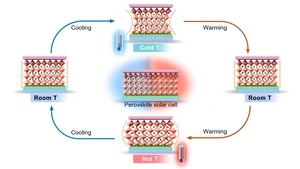
Perovskite solar cells under stress test
Research team identifies thermal stresses as the key to long-term stability:
Perovskite solar cells are highly efficient and low cost in production. However, they still lack stability over the decades under real weather conditions. An international research collaboration led by Prof. Antonio…

Leading Sasol scientist appointed as Industrial Research Fellow at HZB
The closer cooperation is intended to accelerate the innovation cycle for sustainable fuel technologies:
Within the CARE-O-SENE project, HZB is cooperating with the South African company Sasol on innovative catalysts for sustainable aviation fuels (SAF). Now, the collaboration is intensifying: Dr. Denzil Moodley, a…
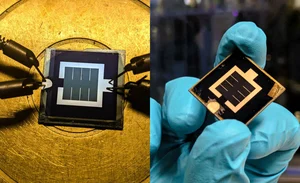
HZB Sets New World Record for CIGS Perovskite Tandem Solar Cells
CIGS-perovskite tandem cell achieves an efficiency of 26.4 %:
Combining two semiconductor thin films into a tandem solar cell can achieve high efficiencies with a minimal environmental footprint. Teams from HZB and Humboldt University Berlin have now presented a CIGS-perovskite…
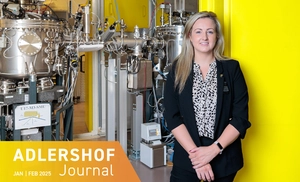
The molecule splitter
Michelle Brown is working on producing green hydrogen:
Splitting water—using electrical energy to break the H₂O molecule into its gaseous components, hydrogen and oxygen, to be exact. Could this process be made cheaper, simpler, and more efficient? This question has…
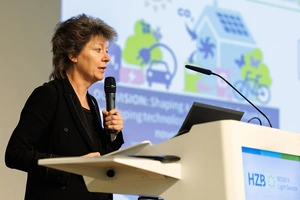
Modernisation of BESSY II light source
Helmholtz-Zentrum Berlin presents the BESSY II+ upgrade programme:
At the 2024 meeting for the users of the electron storage ring BESSY II, Helmholtz-Zentrum Berlin (HZB) presented the BESSY II+ upgrade programme. It enables world-class research at BESSY II to be further expanded and…
![[Translate to English:] Dr. Kazuki Morita (links), Dr. Qingping Wu (rechts), HZB Berlin](/fileadmin/_processed_/f/4/csm_hzb-fellows_afc8411f23.webp)
Two Humboldt-Fellows join HZB
Kazuki Morita and Qingping Wu contribute their expertise in materials and energy research at HZB:
In 2024, two young scientists joined HZB as Humboldt Fellows. Kazuki Morita joined Prof. Antonio Abate's group and brings his expertise in modelling and data analysis to solar energy research. Qingping Wu is an expert…

Community-driven mini-grids in Nigeria
RLI research project shows ways to sustainably electrify rural regions:
In the project ‘Communities of Practice Nigeria’ (CP Nigeria), researchers from Reiner Lemoine Institute (RLI), together with experts from partner organizations, have developed results for the promotion of clean and…
Why an economical Iridium catalyst works so well
An HZB team revealed that the special chemical environment in the P2X catalyst promotes water splitting during electrolysis:
Iridium-based catalysts are needed to produce hydrogen using water electrolysis. Now, a team at HZB has shown that the newly developed P2X catalyst, which requires only a quarter of the Iridium, is as efficient and…
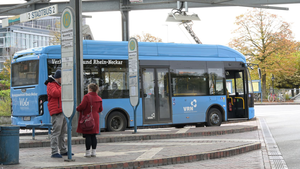
High-performance charging for e-buses in public transport also possible without grid expansion
Successful outcome of the ‘Buffered-HLL’ pilot project for energy- and cost-efficient charging with flywheel mass storage systems:
The nationwide pioneering pilot project ‘Buffered-HLL’ for energy- and cost-efficient high-performance charging with flywheel mass storage for electric buses in local public transport successfully concludes its…
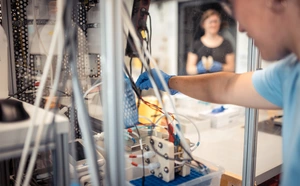
Hydrogen: Breakthrough in alkaline membrane electrolysers
Research team developed a highly efficient and very inexpensive AEM electrolyser:
A team from the Technical University of Berlin, HZB, IMTEK (University of Freiburg) and Siemens Energy has developed a highly efficient alkaline membrane electrolyser that approaches the performance of established PEM…

International alliance for reproducibility of perovskite solar cells
TEAM PV to drive further development and comparability of low-cost solar modules:
Ten teams at Helmholtz-Zentrum Berlin are building a long-term international alliance to converge practices and develop reproducibility and comparability in perovskite materials. The TEAM PV project is funded by the…
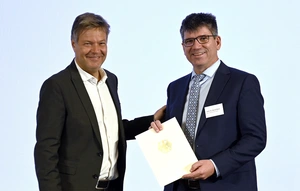
Prof. Dr. Bernd Rech appointed to the Energy Research Advisory Council
HZB‘s Scientific Director will advise the Federal Ministry of Economics and Climate Action (BMWK) on the direction of its energy research policy:
The Federal Minister of Economics Affairs and Climate Action, Robert Habeck, has appointed an advisory board to advise the Federal Ministry of Economics and Climate Action (BMWK) on the energy research programme.…
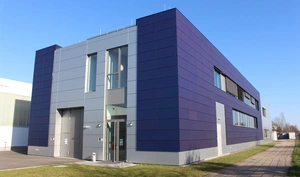
HZB's Photovoltaic living lab reaches the 100 Megawatt-hour mark
The solar facades of the building in Adlershof provide insights into building-integrated photovoltaics:
About three years ago, the living laboratory at HZB went into operation. Since then, the photovoltaic facade has been generating electricity from sunlight. On September 27, 2024, it reached the milestone of 100…
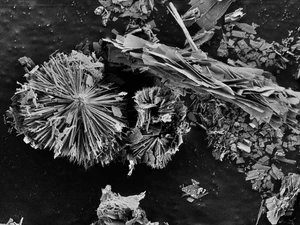
MXenes show talent as catalyst for the production of green hydrogen
This class of materials is more stable and efficient than the best metal oxide catalysts currently available:
The MXene class of materials has many talents. An international team led by HZB chemist Michelle Browne has now demonstrated that MXenes, properly functionalised, are excellent catalysts for the oxygen evolution…
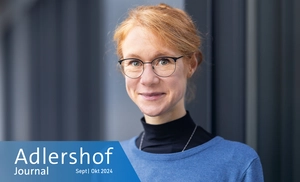
Greenhouse gas neutral research
HZB wants to be a role model for a clean future:
“When a research institution is heavily focused on renewable energies, it should set an example in its efforts for climate protection,” says Carina Hanke. “Because of this, HZB has committed itself to become…
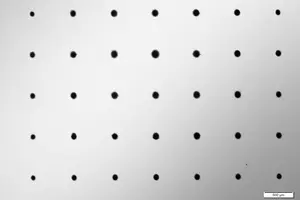
IKZ, BAM, UDE and BESTEC successfully completed KostSol project
The aim of the joint project was to reduce costs in the production of Cu(In,Ga)Se2 solar cells through laser-induced structure formation on surfaces:
The joint project "Cost-Efficient Fabrication of Cu(In,Ga)Se2 Solar Cells through Laser-Induced Surface Structuring" (KostSol), funded by the Federal Ministry of Economics and Climate Protection (BMWK), in…
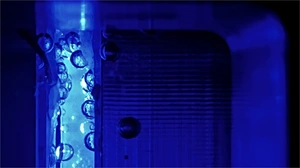
Green hydrogen: “Artificial leaf” becomes better under pressure
Pressures between 6 to 8 bar can increase the efficiency of hydrogen production with sunlight in photoelectrochemical cells:
Hydrogen can be produced via the electrolytic splitting of water. One option here is the use of photoelectrodes that convert sunlight into voltage for electrolysis in so called photoelectrochemical cells (PEC cells).…
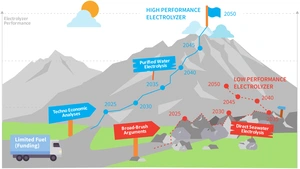
Green hydrogen from direct seawater electrolysis
International experts compare different approaches and warn against hype:
At first glance, the plan sounds compelling: invent and develop future electrolysers capable of producing hydrogen directly from unpurified seawater. But a closer look reveals that such direct seawater electrolysers…
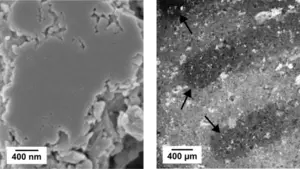
BESSY II shows how solid-state batteries degrade
A team of researchers from HZB and Justus Liebig University Giessen present a new method for surface characterization of battery materials:
Solid-state batteries have several advantages: they can store more energy and are safer than batteries with liquid electrolytes. However, they do not last as long and their capacity decreases with each charge cycle.…
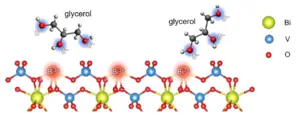
From waste to value: The right electrolytes can enhance glycerol oxidation
HZB team investigates how waste materials can be used more efficiently and in a more environmentally friendly way:
When biomass is converted into biodiesel, huge amounts of glycerol are produced as a by-product. So far, however, this by-product has been little utilised, even though it could be processed into more valuable…